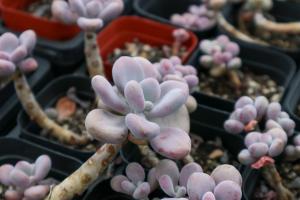Introduction
Hybrid tomato plants have become increasingly common in recent years, and many people are curious about their benefits and drawbacks. Hybrid varieties are created by breeding two different tomato plants together, with the goal of producing a plant with desirable traits. In this article, we'll explore what hybrid tomato plants are and what sets them apart from other types of tomato plants.
What Are Hybrid Tomato Plants?
Hybrid tomato plants are created by crossbreeding two different tomato plants. This process is done in a controlled manner to produce a plant with specific characteristics, such as improved disease resistance or higher yield. The resulting hybrid plant will have a combination of traits from both parent plants, making it unique from either of its parents.
The Benefits of Hybrid Tomato Plants
One of the main benefits of hybrid tomato plants is their improved disease resistance. This is because the parent plants used to create the hybrid have been selected for their ability to resist certain diseases. This can be especially important for large-scale farmers, as it can reduce the likelihood of crop failure and increase overall yields.
Another benefit of hybrid tomato plants is their increased yield. This is often the result of the plant's ability to grow and produce fruit more quickly, as well as its ability to produce larger and more uniform fruit. This can be advantageous for both farmers and gardeners looking to get as much produce as possible from their plants.
Finally, hybrid tomato plants can also offer improved flavor and texture compared to traditional tomato varieties. This is because breeders can select for traits that will enhance the overall taste and texture of the fruit. This can make hybrid plants more appealing to consumers and lead to greater demand.
The Drawbacks of Hybrid Tomato Plants
One potential drawback of hybrid tomato plants is their lack of genetic diversity. Because these plants are created by crossbreeding two specific parent plants, their genetic makeup is often limited. This can make them more susceptible to certain diseases or pests over time, as these organisms can adapt to the plants' specific genetic profile.
Another potential drawback of hybrid tomato plants is their cost. Because hybrid plants need to be carefully bred and selected, they can often be more expensive than traditional or heirloom varieties. This can be a barrier for small-scale farmers or gardeners who are looking to save money on their plants.
Conclusion
In conclusion, hybrid tomato plants offer a number of benefits, including improved disease resistance, higher yields, and better flavor and texture. However, there are also drawbacks to consider, such as their lack of genetic diversity and higher cost. Ultimately, the decision to grow hybrid tomato plants will depend on the specific needs and preferences of the farmer or gardener.

 how many times do yo...
how many times do yo... how many planted tre...
how many planted tre... how many pine trees ...
how many pine trees ... how many pecan trees...
how many pecan trees... how many plants comp...
how many plants comp... how many plants can ...
how many plants can ... how many plants and ...
how many plants and ... how many pepper plan...
how many pepper plan...































